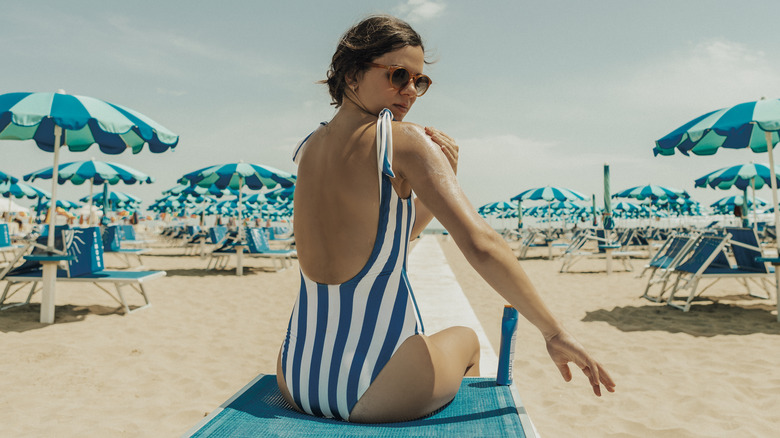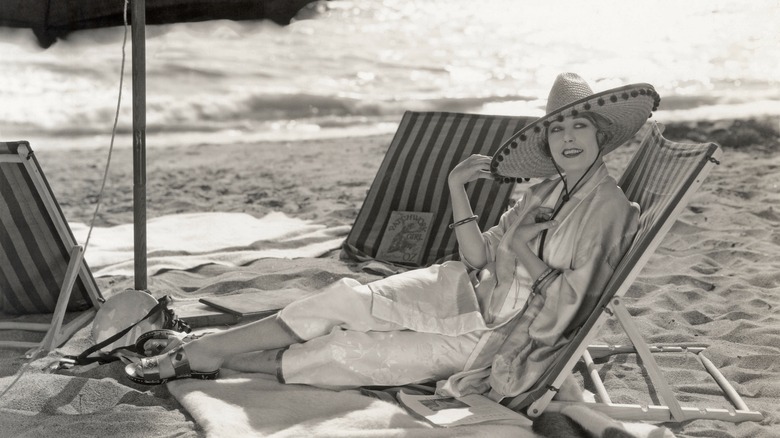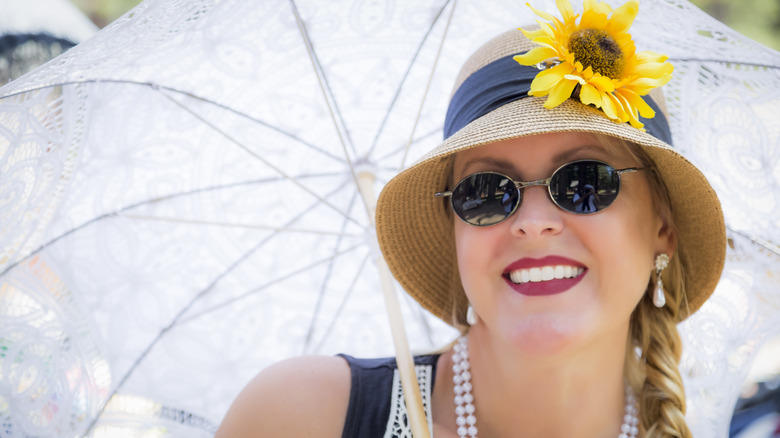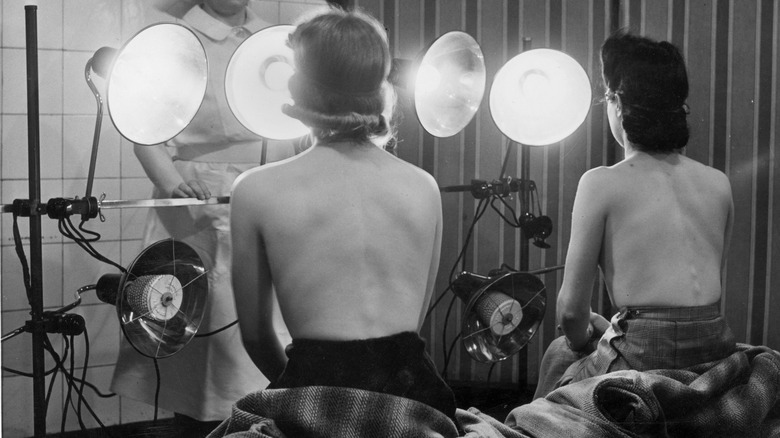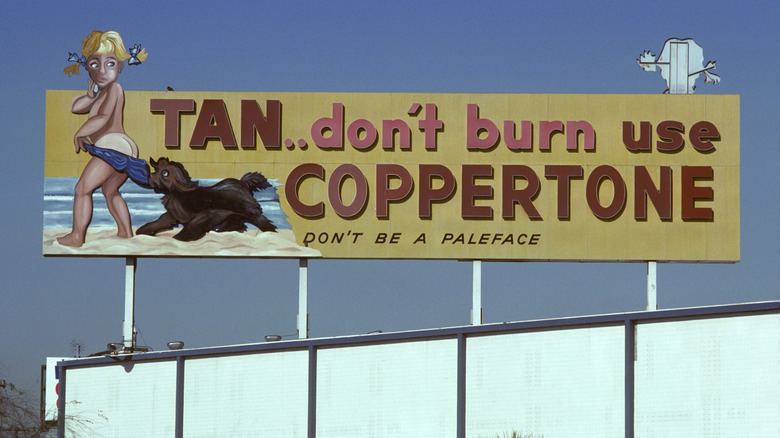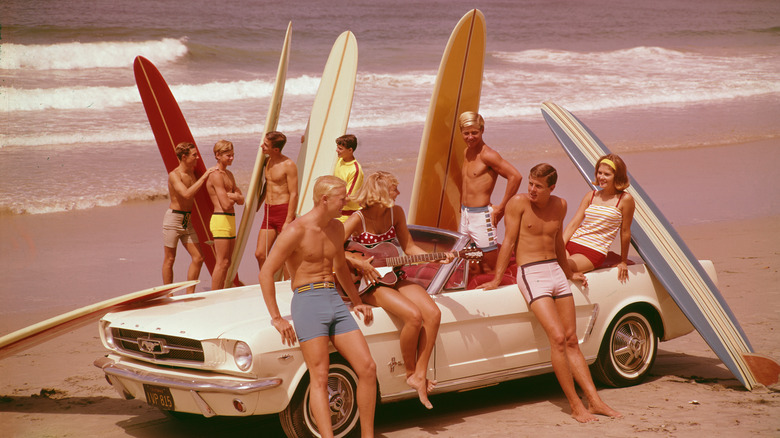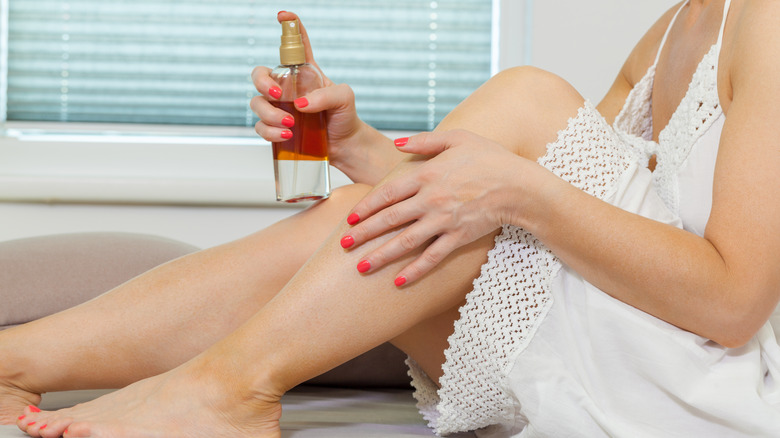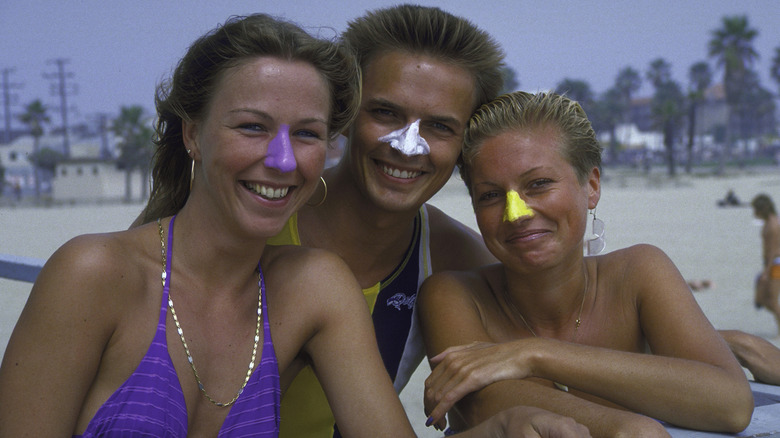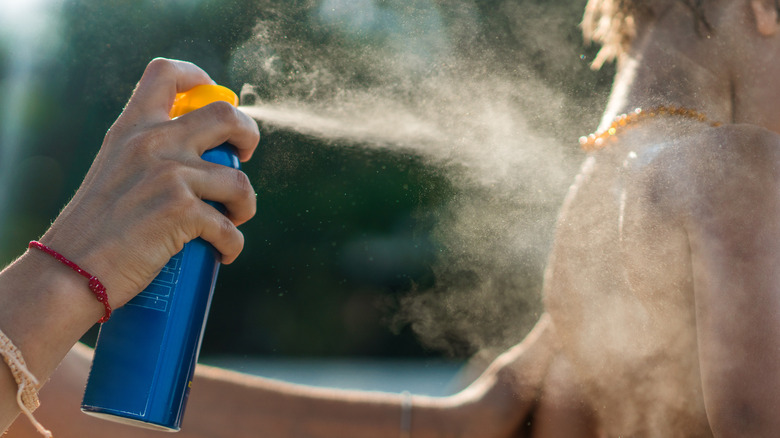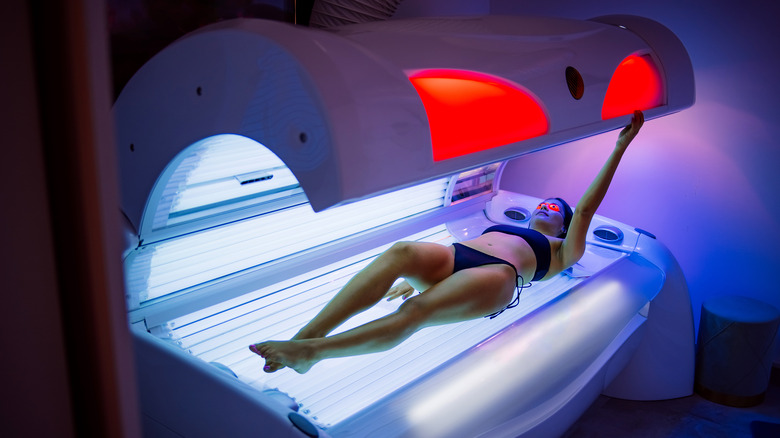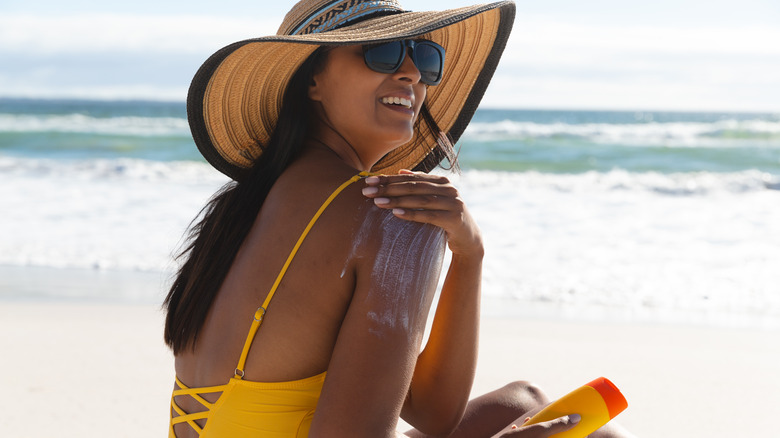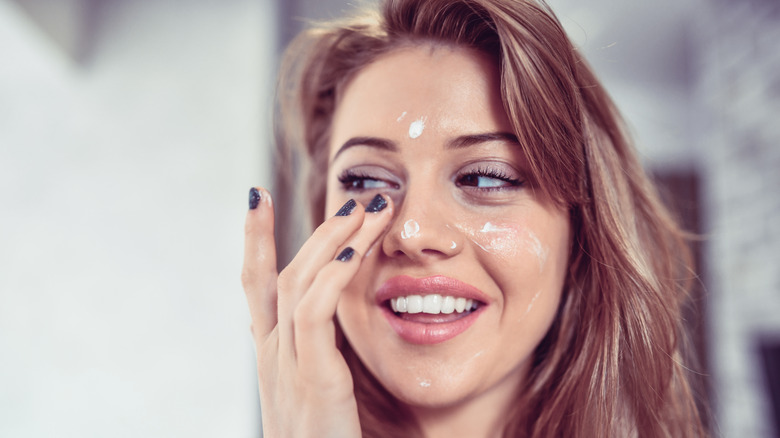100 Years Of Sun Care And Tanning
Next to hitting the beach and enjoying a cold beverage, getting a sun tan (or avoiding the sun altogether) is an important part of how many people enjoy the warmer months of the year. Today, we're happy to spend time and money on getting the perfect tan all year round with self-tanning products in all shades, formulas, and applications styles retailed by hundreds of beauty brands. We're aware of the dangers of not wearing SPF and exposing yourself unprotected to the sun, both artificially via sunbeds or through excessive sunbathing.
However, this wasn't always the case. Rising in popularity at the beginning of the 20th century, catching a tan became associated with physical health. As the decades passed, many different ways of getting a tan were popularised, from artificial sun lamps to tanning beds and slow-developing skin oils. Awareness of how damaging the sun's rays can be and how to protect yourself from it has also gone through a big transformation.
Research around the negative impact of tanning beds and sun exposure helped us to develop the protective sunscreens you see at every drugstore today. Overall, sunscreens have gone through a long journey of transformation. Check out our rundown of the last century of sun care and tanning, from eye protection as a practical product for pilots to tanning lotions as a fashionable accessory.
1920-1929: Tanning rises in popularity
While pale skin had been the Victorian beauty standard, the 1920s popularized tanning as a status symbol influenced by the media and celebrities. It's rumored that Coco Chanel herself was the one to bring sun tanning to public attention in 1923 after a holiday on the French Riviera, although whether or not this is actually true has been debated. Nevertheless, the '20s were the era in which tanning became fashionable in a big way.
Sporting a summer glow showed that you had the leisure time (and the money!) to be traveling and spending your days at the beach or abroad. Tanning in the '20s, for many, was all about having fun in the sun. But during this period, the first link between skin cancer and sun exposure began to be established via a 1928 study in the Laboratories of the Imperial Cancer Research Fund regarding UV radiation and the skin cancer it caused in animal test subjects.
However, it would be another decade or so until the link between skin damage and spending too much time in the sun unprotected would be realized by the general public. Although the first commercially available sunscreen came out in 1928, most people preferred to face the sun with little to no protection — the modern SPF sunscreens and lotions worn today were not yet available on the market.
1930-1939: The invention of SPF and trendy eye protection
During a decade of fashion statements and star-studded celebrities, the 1930s saw sun care as a stylish pastime. Although sun tanning was still incredibly popular, the public's interest in keeping their skin safe slightly increased, with the first SPF sunscreen created to meet these new demands. Named Glacier Cream, this sunscreen was created by Austrian chemist Franz Greiter after getting sunburnt climbing the Piz Buin, a mountain in the Alps.
While others had previously tried to invent sun lotions and sunscreens, Glacier Cream marked one of the first times it was somewhat effective, despite having only an SPF 2 rating. An influential figure in the world of sun protection and tanning, Greiter later went on to create the Sun Protection Factor system, aka SPF. Interest in protecting your eyes from the sun was also becoming increasingly popular, thanks to the prominence of Hollywood stars sporting such accessories.
Aviator sunglasses, commonly known today as Ray-Bans, were originally designed by the U.S. military to protect pilots' eyes from sun glare but soon were worn by celebrities in decades to come. Although Ray-Bans wouldn't hit their height of popularity until the '50s and '60s, the 1930s marked the first beginnings of sunglasses as a fashionable luxury rather than simple eye protectors. These sunglasses would make a practical appearance again in the following decade, with the beginning of WW2 taking the sun care industry's attention away from luxury products for the time being.
1940-1949: No beach? No problem! The start of artificial tanning
Sun care and tanning of the later 1940s featured a turn towards artificial tanning methods. During a period of uncertainty and turbulence, many people found that going to the beach to tan was too much of a commitment, thanks to both the demands of life during WW2 and financial costs. Setting aside a large amount of money for a trip to Cuba or the French Riviera was even less of a realistic method of sunbathing than in previous years.
In response to this, interest in artificial or "fake" methods of tanning began to rise. While women of the '40s didn't have the spray-tan-in-a-bottle and gradual tanning moisturizers of the modern day, they made do with the limited cosmetics available. Many women chose to get experimental with their self-tanning — tea bags, cooking products such as Bovril, and other home items were used to create the illusion of a realistic tan in place of an actual holiday in the sun.
As well as tanning, the public's interest in eye care and sunglasses was rising. Manufacturers turned their attention back towards the original purpose of sunglasses to protect airmen from sun glare and correct their vision when flying, in order to support the needs of WW2 aviators. Around this time, Glacier Cream became commercially available for the first time, and sunscreen slowly began to garner more mainstream attention.
1950-1959: The beginning of modern skin protection
Unlike the '40s, tanning in the 1950s was all about real sunshine and the beginnings of sun protection as you see it today. Tanned skin was still a symbol of physical health and a well-traveled person, with the public now free to enjoy more luxurious habits such as occasionally hitting the beach. One of the first brands to pick up on the renewed market for affordable sun care was Coppertone.
Originally developed in 1944, Coppertone became particularly iconic in the '50s and early '60s thanks to the "Coppertone Girl" advertisements found in many big cities. A brand that mostly produced sunscreens, Coppertone was known for its suntan lotion intended to deepen the look of your tan without spending too long in the sun. This brand and others, such as Ambre Solaire and Piz Buin, capitalized on the public's desire to tan and the impacts of sun exposure that were becoming more of a concern.
Alongside the public's renewed love for the sun was the introduction of a fashion item that would change the landscape of women's beach attire for the next 70 years: the modern bikini. Sported by beauty icons like Brigitte Bardot, Sophia Loren, and of course, Marilyn Monroe, the bikini became the perfect outfit to accompany your new, all-over tan — fake or real. The '50s were also responsible for the birth of the swimsuit-oriented magazine Sports Illustrated in 1954, bringing the tanned skin look even more into the public eye.
1960-1969: Back to the beach
From surfing to sunshine and swimsuit editions, sun care and tanning in the '60s revolved around beach etiquette and what was popular on the big screen. Beach-themed films, TV, and music like the Beach Boys contributed to the popularity of natural sun tanning once again, with surfing also experiencing an upswing in attention during this decade.
Many people wanted the tanned, beachy summer look associated with this subculture without having to physically hit the waves. Products such as Coppertone, Solarcaine, and Sea & Ski lotion were especially popular as ways to emphasize and create a tan or soothe already-burnt skin.
The pain of sun exposure was still a big issue for beachgoers — while SPF-certified sunscreen did exist, it usually ranged from 2 to around 8 in the '60s and '70s, making it hard for them to protect themselves from the sun's harmful rays. Many people went in search of a tan without regard for the damage it could cause their skin and turned to unconventional products such as Crisco (yes, the cooking oil) and baby oil to achieve a sun-kissed tan.
1970-1979: The rise of indoor tanning and self-tanners
Like the '40s, tanning in the 1970s was all about getting that sun-kissed look with the help of artificial methods. Sun lamps became a popular method of getting an even tan without splurging on a beach vacation or risking excessive sun damage outside. While professional tanning studios of the modern day were still a little while off, indoor tanning technology was developing at a rapid rate. Invented by German scientist Friedrich Wolff in 1970, the first indoor tanning machines were making their way into America. These were believed (and promoted) to be safer than actual tanning, though, as we know today, this wasn't actually the case.
The popularity of the kinds of self-tanners you see today was also on the rise during the '70s. Tan enhancers from brands like Coppertone were a popular accessory to sunbathing still and were often marketed as a fashionable cosmetic product, along with burn lotions and oils intended to help relieve the pain of sunburns. While artificial tanning was popular, people still liked to spend time in the actual sun and hit the beach.
This was the era where sunscreen technology began to be developed further — Piz Buin introduced creams with ultraviolet A and B filters, and the SPFs that were widely available extended to SPF 15. The awareness of how the sun and UV rays could be harmful to the skin was growing, as links between melanoma and artificial tanning had been researched, but not in its entirety.
1980-1989: Colorful sun care and professional tanning salons
The arrival of the 1980s signaled the beginning of turbulent change for the sun care and tanning industries. Unlike the previous decades, sunscreen in the '80s was all about fun colors and eclectic methods of applying sunscreen. Aware of the demand for sunscreens that could withstand water and a long day at the beach, waterproof sunscreens and lotions hit the market at the tail-end of the '70s and into the '80s, though the actual effectiveness of these creams was debatable.
Popular with surfers and tan enthusiasts alike, zinc oxide creams in various colors became one of the period's most defining sun care products. Brands such as Zinka promised to protect their wearer from UV rays all day long. Sold along with the traditional creamy white, Zinka was available in eye-catching lavenders, baby blues, and yellows.
The '80s also marked the explosion of artificial tanning culture. No longer content to sit in front of a sun lamp at home, professional tanning booths and salons became an entire industry of their own and could be found around the country. With the first commercial tanning beds arriving in the U.S. in 1978, the '80s only served to make this form of tanning even more popular and a trend that would continue over the next two decades.
1990-1999: Sunscreen in all its forms
If the '80s were the decade of different colors of sunscreen, the '90s were the era of applying sunscreen in more ways than you'd think possible. Spray-on sunscreens and gel creams, in particular, enjoyed a period of popularity for their easy application. These new forms of sun care were not necessarily the most effective at blocking out the rays, however. This fine spray application method made it harder to ensure full coverage when applying sunscreen. But the biggest problem with aerosol spray sunscreens is their link to toxic carcinogens in later years.
It wasn't just the look of sunscreens that was changing, but the protection that they were able to give your skin. Thanks to widening research into sun damage and the risks of long-term exposure, SPFs were now available all the way up to 30, and public knowledge of the danger of the sun was still growing. Studies into long-term sunscreen application supported its use as an anti-aging product and an important protector against skin cancer. The '90s were particularly important in the history of sun care and tanning as this is the period in which sun awareness and the desire for truly effective sunscreens became more widespread.
2000-2010: Tanning bed and SPF awareness
Continuing from the '90s, tanning in the 2000s saw the continued popularity of professional tanning booths and sunbeds. Many people flocked to salons in search of a sunny all-year-round glow on a budget. While the early aughts were all about artificial tanning and sunbeds, awareness of the dangers of tanning and how to protect your skin was still on the rise.
With over 87% of people at the time aware of the connections between melanoma and tanning, according to a study shared in the Archives of Dermatology, the sun care industry was working to make products with maximum levels of protection. Sunscreens with protection up to SPF 50 were now available in most major drugstores.
The Y2K sun care trends didn't stop with SPF creams, however. Celebs and sun lovers alike donned tiny sunglasses, chunky frames, and brightly colored lenses as one of the era's biggest sun care fashion accessories. The 2000s was also when another sun care-related issue first received wider attention: the potential environmental impacts of sunscreen. While a vital part of protecting your skin, sun lotions and other sunblock products were found to contribute to coral bleaching and damage to sea life, according to a 2008 study in Marine Pollution Bulletin.
2010-2019: Modern sun care
In an era of fashionable sunscreen and cosmetics designed for beauty and blocking the sun, the 2010s continued the trend of sun care being as available and as protective as possible. Not only available in every drugstore, wide-reaching ad campaigns designed to promote the necessity of sunscreen was important for many brands. The importance of young people and children wearing sunscreen was a big priority for those responsible for regulating tanning products.
With age restrictions for tanning beds being placed in nearly every U.S. state, people were no longer content to tan without knowing the full risks. In fact, Australia banned tanning beds entirely in 2015, six years after Brazil became the first country to do so. The 2010s similarly featured an upswing in sunscreens' inclusion as ingredients in beauty products and other cosmetics. As well as conventional sunscreens and burn lotions, retailers sought to include SPF in daily moisturizers and lip balms for added protection.
The trend of eyewear as a stylish way to block out the sun was also on the rise thanks to celeb-endorsed and designed sunglasses brands. Sported and designed by celebs like Kim Kardashian, Gwen Stefani, and Hilary Duff, the sunglasses industry had come a long way from the dominance of aviators in the '40s and '50s. No longer just an essential piece of equipment for pilots, a pair of stylish sunglasses used to prevent the eyes from getting sunburned had become as essential to any summer outfit as a pair of sunglasses or floppy sunhat.
2020-Present: Sun care becomes a beauty trend
Today, sun care and tanning are some of the biggest cosmetics industries in the world. Although methods of tanning like the sun lamp are less popular, self-tanners, tan developer lotions, and all the accessories needed to apply these products show no signs of waning in popularity. While traditional sunbathing is still a popular pastime for some, most people are now aware of the risks of sunbathing, with most sunscreens available at the highest SPF ratings from 30 to 50 (and beyond).
Having sunkissed skin before a big night out or holiday is still an important beauty step for many, but we are now recognizing the risks that can come with this and how to best protect ourselves from the sun. With hashtags like #SelfTan and #SelfTanRoutine racking up billions of collective views on TikTok, the sun care trends of today are more about safe skincare practices and less UV exposure as possible.
The sunscreen and skincare industries now boast an extensive collection compared to the dominance of Coppertone in previous decades. There are now sunblocks available for all skin tones and types. As well as online skincare communities, dermatologists are more equipped to help us pick the best sunscreen and treat any sun damage. Effective sun care has become an important way to protect our planet and our skin, with eco-friendly sunscreens also available. It's safe to say sun care has come a long way, and the future of our skin looks healthier because of it.
